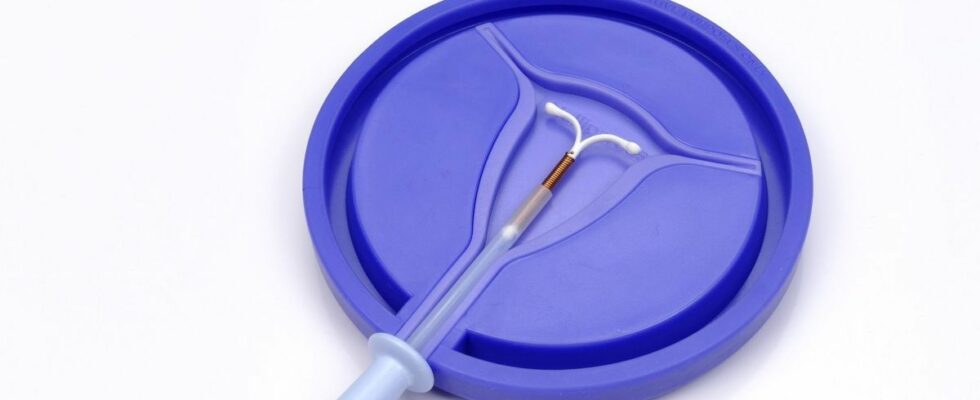Published on
updated on
Reading 3 min.
in collaboration with
Odile Bagot (Obstetrician-gynecologist)
Faced with the increase in complaints about pain from patients during the insertion of their IUD, new recommendations aimed at limiting this pain have been published in the United States. Dr. Odile Bagot, gynecologist, enlightens us.
In recent years, there has been an increase in the number of women using the IUD (intrauterine device) as a means of contraception. This increase is accompanied by numerous complaints, particularly on social networks. Some of the women concerned claim that doctors ignore their concerns and pain when inserting the IUD. Some of them describe this procedure as “the worst pain imaginable” with “the feeling of being torn, cut from the inside“.
A movement taken into account by the American health authorities (Centers for Disease Control and Prevention – CDC), who published new guidelines on Thursday, August 8 concerning the management of pain during the insertion of an IUD. Discover these measures as well as the opinion of Dr. Odile Bagot, gynecologist and member of the Doctissimo expert committee.
Provide sufficient information to the patient
The new American measures aim to raise awareness among health professionals. First, they stipulate that before inserting an IUD, “All patients should be informed about the potential pain as well as the risks, benefits, and different pain management options. A person-centered plan for IUD insertion and pain management should be developed based on the patient’s preferences.”Dialogue between patient and caregiver is therefore at the heart of priorities.
According to Dr. Odile Bagot, if the choice of contraception falls on the IUD, the health professional must first present the method with its advantages and disadvantages as well as explain how the insertion will take place while showing the objects used. “Explaining what is going to happen has a positive impact on the patient’s feelings at the time of the procedure, so you have to take your time and reassure them as much as possible.” recommends the expert.
However, she qualifies: “We must also recognize the possibility of pain, which is specific to each person, and remember that being in a lot of pain is not common.”. In fact, the IUD insertion is very short since it lasts on average less than a minute!
Suggest methods to alleviate pain
On the other hand, the recommendations expand pain control options by including, in addition to lidocaine injections, the possibility of requesting it in the form of anesthetic spray, cream or gel. The new guidelines also indicate that misoprostol, a medication that helps soften the cervix, is not recommended for routine IUD insertions, but may be useful in certain circumstances, such as in cases where previous insertions have failed.
According to Dr. Odile Bagot, performing local anesthesia at the level of the cervix does not alleviate contractions. While she is used to prescribing preventive medications depending on the patient (Spasfon Lyoc, Antadys), she also emphasizes the use of gentle methods that reassure patients. “Some listen to music during the pose to relax, others practice self-hypnosis which helps them convince themselves that everything will go well” explains the gynecologist. However, the health professional does not neglect the potential pain: “Despite these methods, it is not always a pleasant moment. After the insertion, the pain can persist, especially for women who are used to having painful periods. In this case, they can be prescribed painkillers to relieve them.”.
Take past experiences into account
Finally, the measures aim to recognize each patient’s experience of pain as individual and unique to her. This requires taking into account “his previous experiences, his traumas as well as his mental health problems, such as depression or anxiety” can be read in the CDC guidelines.
Dr Odile Bagot takes the opportunity to remind people of the importance of choosing a professional. “Pain is also a matter of technique, so it is best to turn to a professional who is used to performing this type of intervention.e The secret is also not to rush and to use the right equipment (fine tweezers)”she explains.
The gynecologist maintains that there is no universal approach to treating and feeling pain and that it is above all necessary to listen to patients and have reassuring words. It is the duty of doctors to defuse patients’ fears, including those relayed on social networks.
